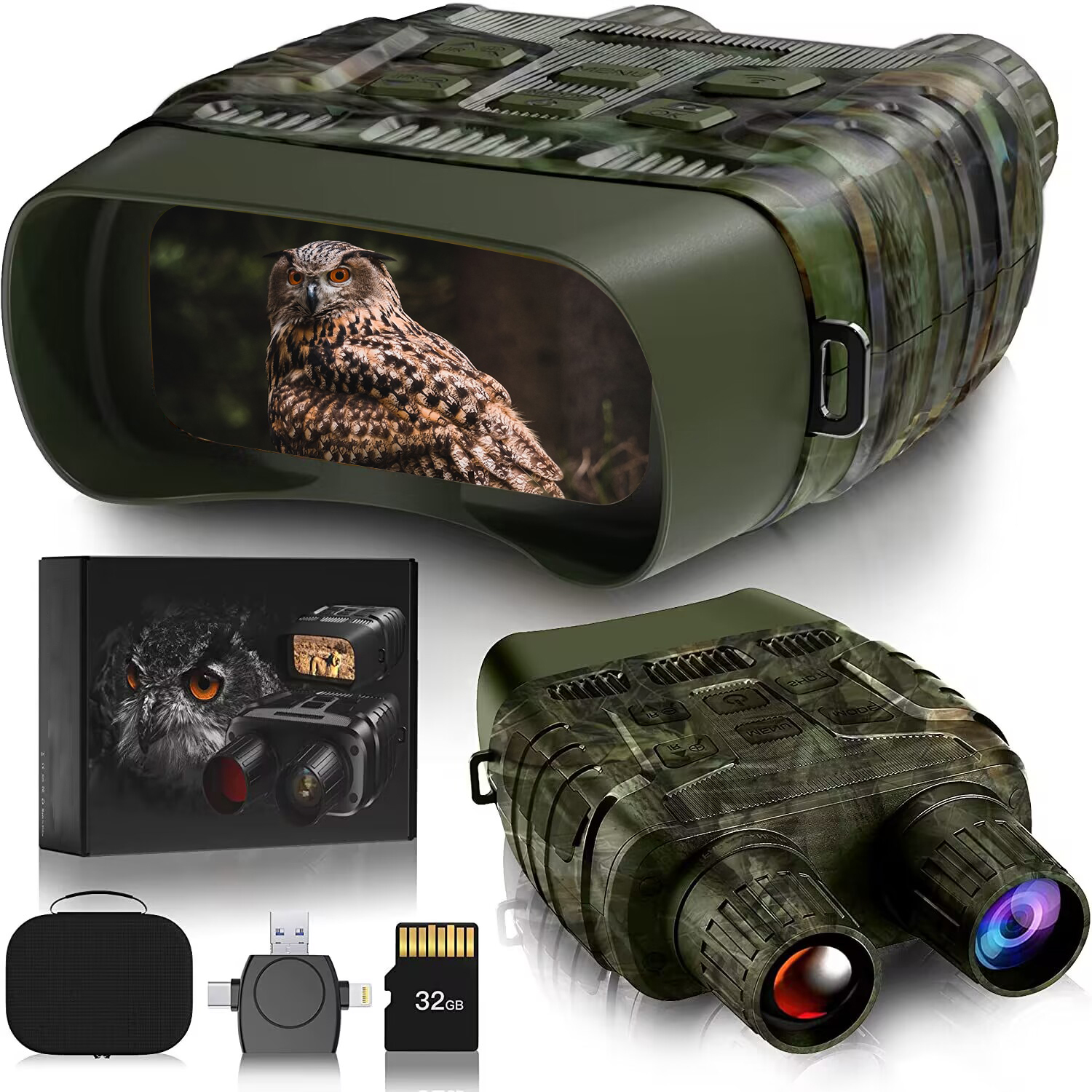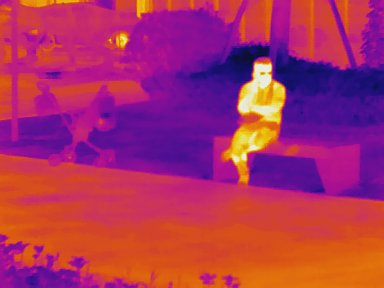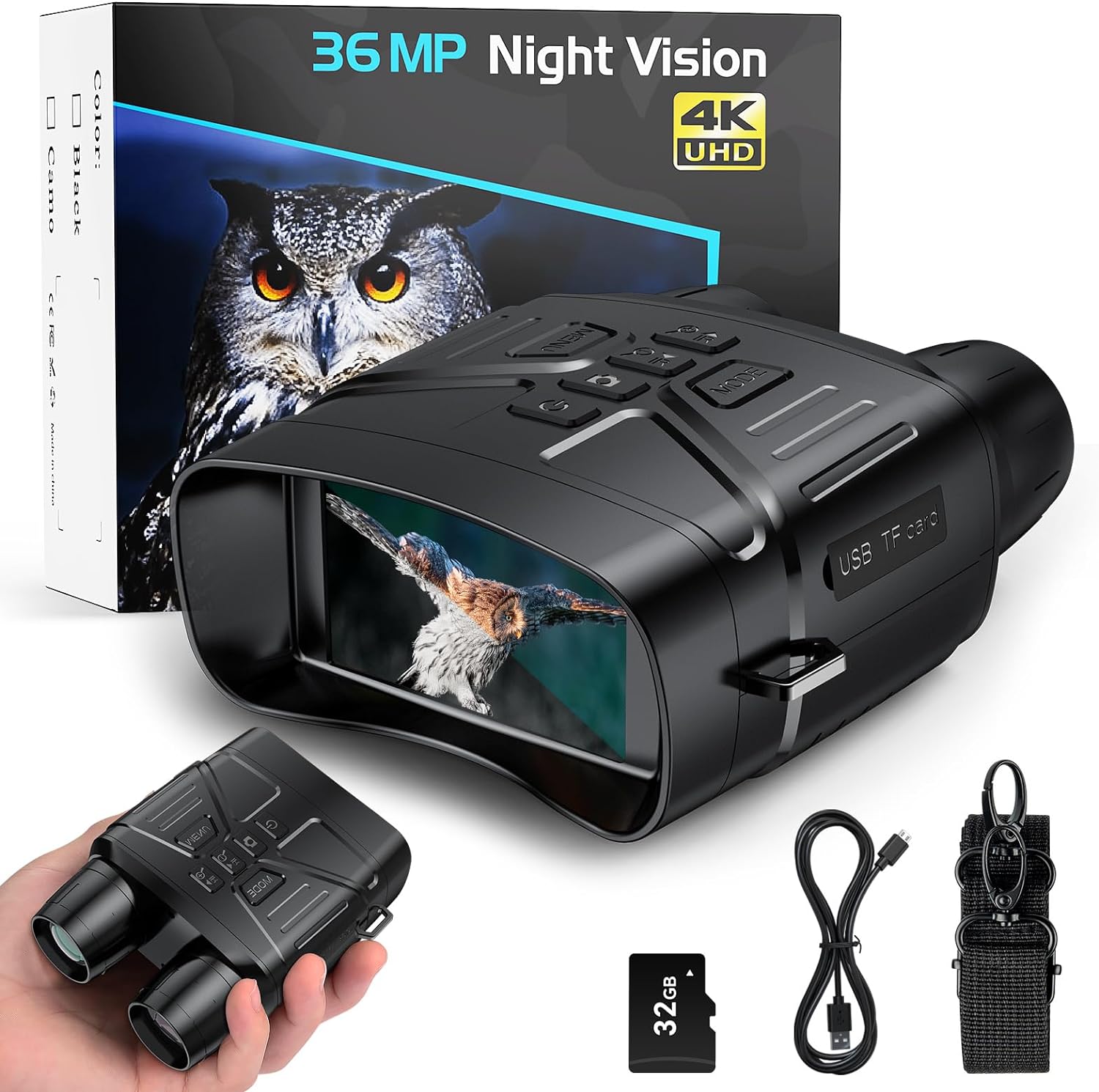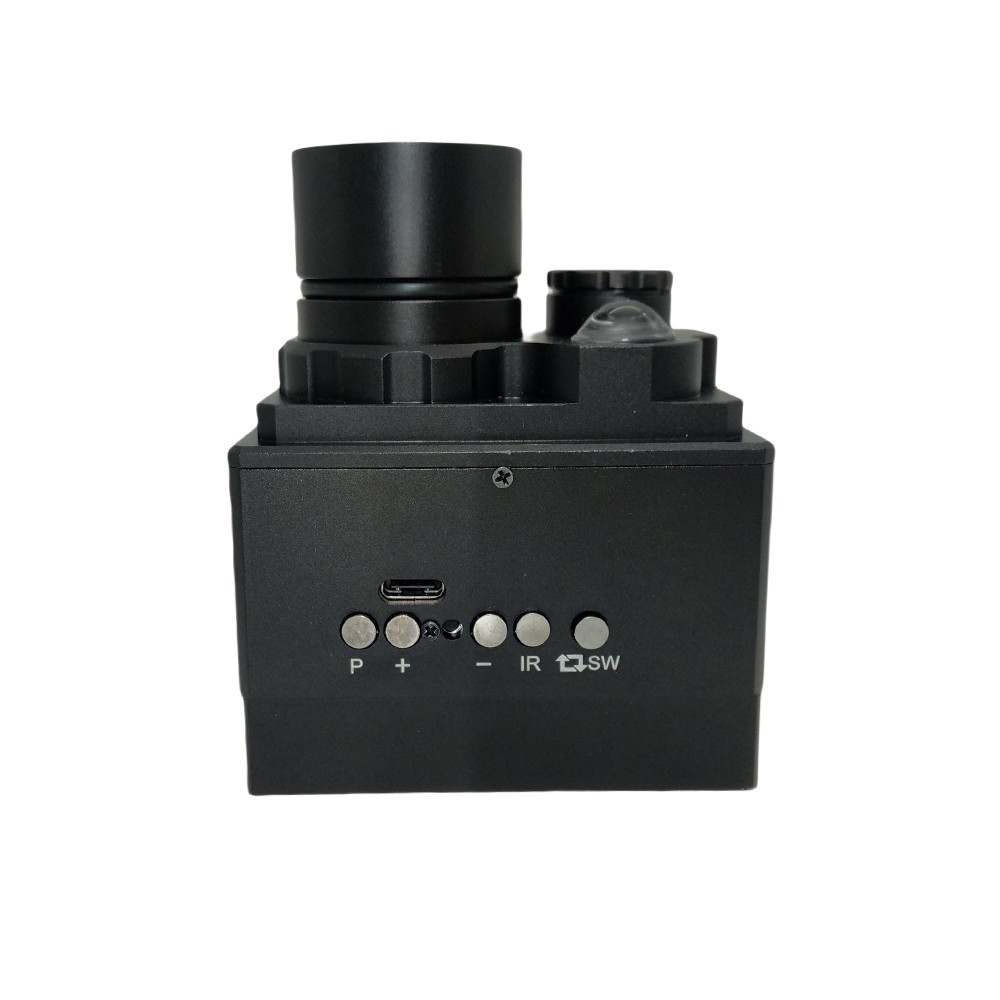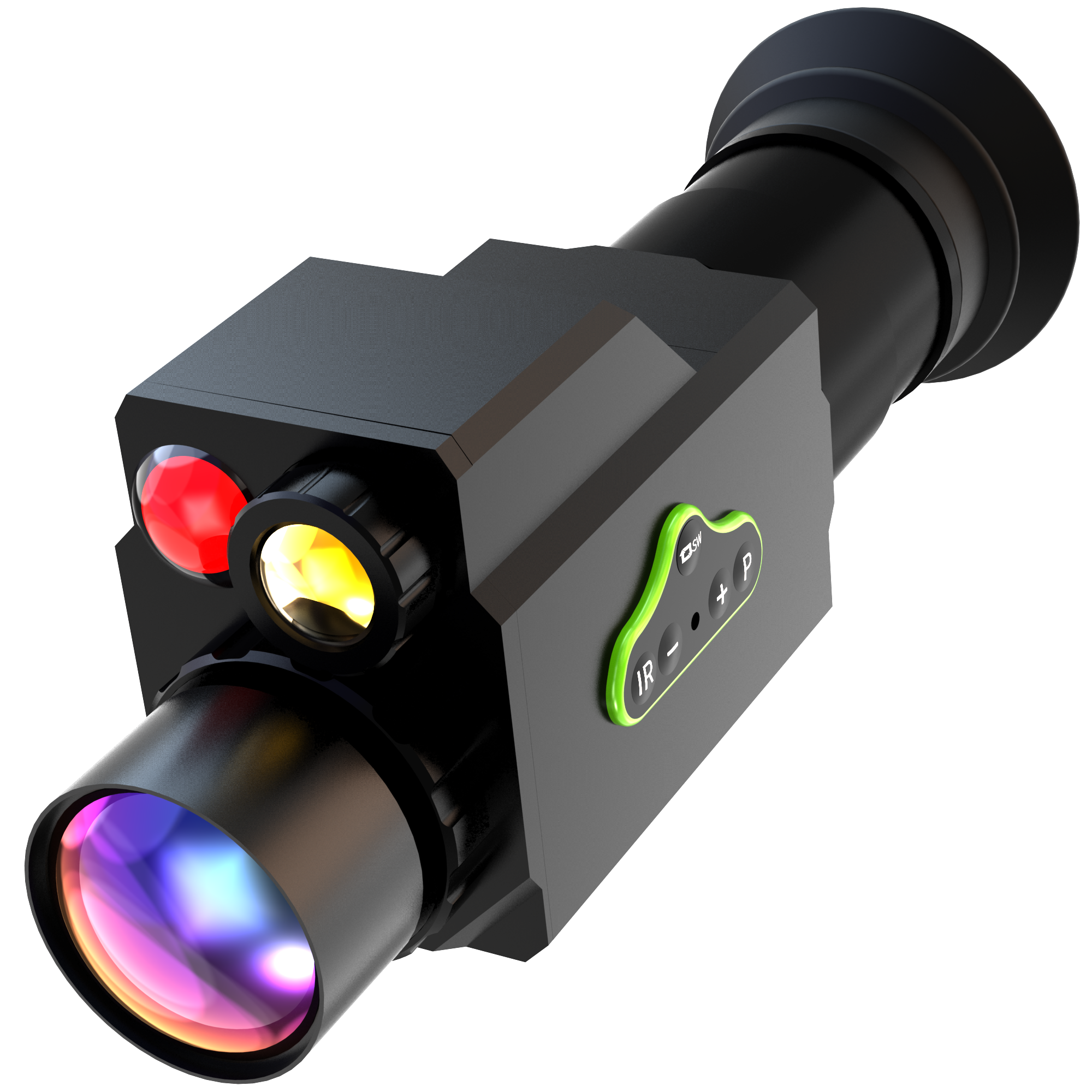There are 3 types of devices available for low-light observation: low-light telescopes, infrared night vision devices, and thermal imaging cameras. It’s important to note, however, that in completely dark environments, only infrared night vision devices and thermal imaging cameras can enable effective observation. Thermal imaging and night vision are both types of technology used to enhance visibility in low-light or dark environments, but they operate on fundamentally different principles. Understanding these differences can help users decide which technology is more suited to their specific needs, whether for security, wildlife observation, or tactical applications.
Thermal Imaging: Principle and Function
Thermal imaging relies on the passive detection of infrared radiation emitted by objects due to their temperature. Every object above absolute zero emits infrared radiation, and thermal cameras capture this energy. The intensity of infrared radiation detected is then translated into an image. This image is typically displayed using various color schemes, such as white heat, black heat, or pseudo-color modes, depending on the application and user preference.
In a thermal imaging device, the sensor detects the heat emitted by objects, which is then mapped to an image, where hotter objects appear brighter or in different colors depending on the setting. Thermal imaging is particularly useful in complete darkness or in environments where visibility is compromised by factors like smoke, fog, or dust, as it doesn’t rely on visible light to function.
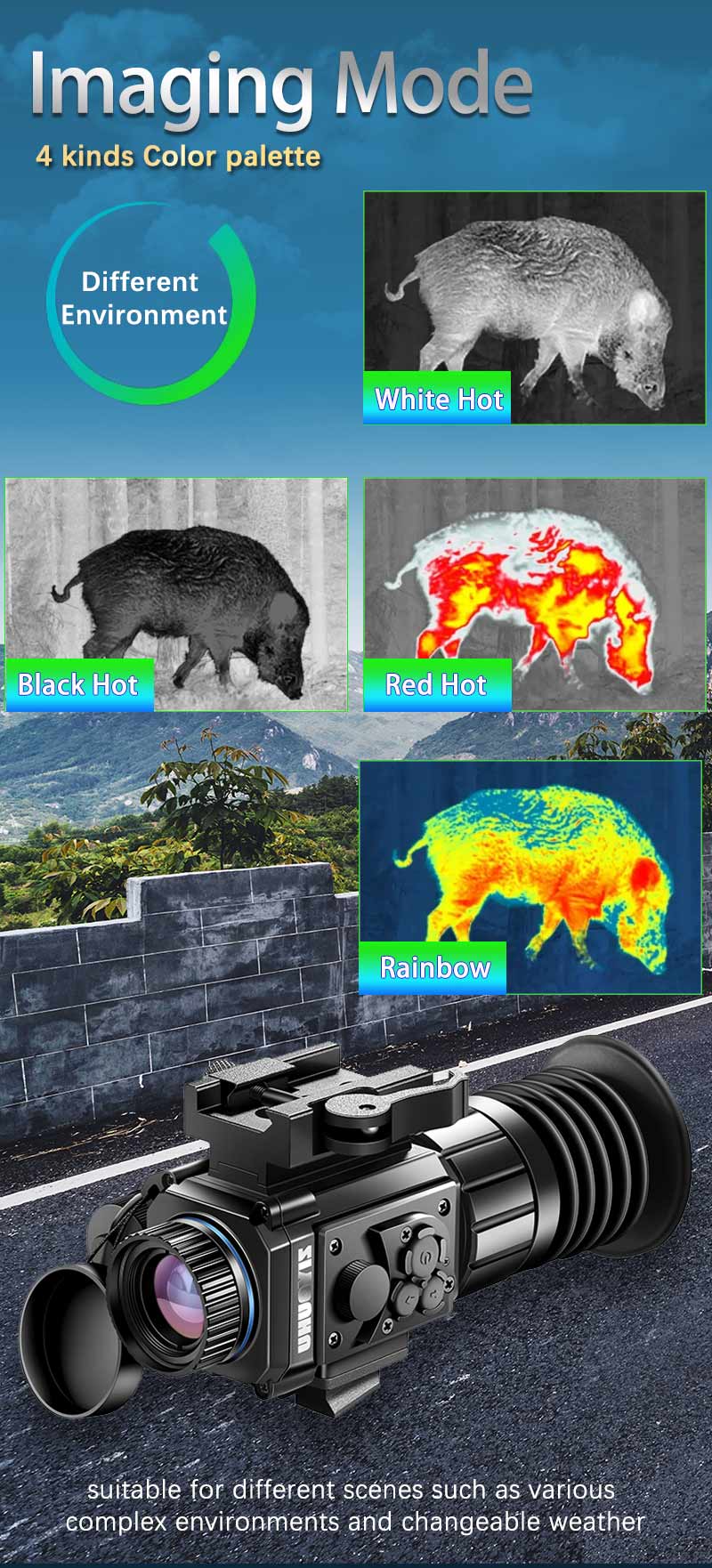
Night Vision Devices: Principle and Function
Night vision devices can be mainly divided into two categories based on their working principles: active infrared night vision devices and passive infrared night vision devices, with distinct differences in core technology, application scenarios, and performance characteristics:
Active infrared night vision devices: Equipped with a built-in infrared light source (such as infrared LEDs or infrared searchlights), these devices actively emit invisible infrared light (to the human eye) toward the observation target during operation. They then receive the infrared signals reflected by the target through the internal optical system, and finally convert them into visible images. Their advantage is that they can capture clear images even in completely dark environments and are less affected by ambient temperature. However, the actively emitted infrared signals may be detected by enemy infrared detection equipment, resulting in poor concealment. Thus, they are more suitable for civilian scenarios (such as night patrols and outdoor observation) rather than military stealth missions.
Passive infrared night vision devices: Unlike active ones, they do not rely on external light sources. Instead, they form images by receiving infrared energy radiated by the target itself (or the environment)—all objects with a temperature above absolute zero (-273.15°C) radiate infrared light outward. The device captures these temperature differences through a high-sensitivity detector and converts them into visible thermal images. Their core advantage is complete no light source exposure, offering excellent concealment, which makes them suitable for scenarios requiring silent observation (such as military reconnaissance and field tracking). However, they are greatly affected by ambient temperature: if the target temperature is close to the background (e.g., animals in snow during winter), the image contrast will decrease, and the equipment cost is usually higher than that of active devices.
Advantages and Disadvantages of Thermal Imaging vs. Night Vision
Advantages of Thermal Imaging:
1.Visibility in Total Darkness: Thermal imaging can detect heat signatures in complete darkness, making it ideal for night-time surveillance or search-and-rescue operations when no light is available.
2.Penetration Through Smoke and Fog: Thermal devices can see through smoke, fog, and light obscurations, making them more versatile in challenging weather conditions.
3.Longer Range: Thermal imaging can detect heat sources at much greater distances than night vision, making it highly effective for spotting distant objects or detecting movement at a long range.
4.Not Affected by Light: Strong light sources, such as headlights or fires, have minimal impact on the performance of thermal imaging, unlike night vision devices that can be washed out or disrupted by bright lights.
5.Effective in Identifying Heat Signatures: Thermal imaging can easily identify living beings (animals or humans) based on their heat signatures, even if they are partially hidden or camouflaged, as long as there is a significant temperature difference.
Disadvantages of Thermal Imaging:
1.Lack of Detail: While thermal imaging is excellent for detecting heat sources, it does not provide the fine detail that night vision can offer. Users can identify the presence of an object, but discerning the exact nature of the object—whether it’s a person, animal, or vehicle—can be difficult based on thermal data alone.
2.Cost: Thermal imaging devices are generally much more expensive than night vision devices, which may put them out of reach for some users or applications.
3.False Positives: Because thermal imaging relies on temperature differences, it can sometimes generate false readings or detect objects that are not relevant, such as hot rocks or equipment in the environment, leading to potential confusion.
Advantages of Night Vision:
1.Clear Object Identification: Night vision devices excel at clearly revealing the shapes and features of objects in low light, making them useful for identifying specific targets, such as people, animals, or vehicles. Unlike thermal imaging, night vision can help discern whether a target is a cat, person, or rabbit based on its appearance.
2.Relatively Lower Cost: Night vision devices are generally less expensive than thermal imaging systems, making them more accessible for recreational users, hunters, or security personnel who need reliable low-light visibility.
3.Enhanced Detail: Night vision provides more detailed, high-resolution images, which can be crucial in situations where identifying the specific characteristics of a target is important.
4.Extend Observation Range with External IR Lights
With the support of a stronger infrared light source, they can overcome the original limitation of observation distance, allowing for clear observation of targets at greater distances.
Disadvantages of Night Vision:
1.Requires Ambient Light: Night vision devices depend on available light, such as starlight, moonlight, or infrared illuminators. In the complete absence of light, night vision devices either become ineffective or require supplemental infrared light to function.
2.Limited Range: Night vision has a shorter effective range compared to thermal imaging, particularly in total darkness or poorly lit conditions. The range can be affected by the intensity of available ambient light.
3.Difficulty with Camouflage Detection: Night vision may struggle to identify camouflaged or concealed targets, as these devices rely on ambient light to form an image. If an object blends in with its surroundings, it may be hard to detect.
4.Sensitivity to Bright Lights: Night vision devices can be overwhelmed by bright light sources, such as streetlights or vehicle headlights, which can cause the image to wash out or become temporarily blinded.
Both thermal imaging and night vision devices have their own unique advantages and disadvantages, and the choice between the two largely depends on the user’s specific requirements. But,
Breakthrough Innovation: A More Powerful Choice!
Now SECOZOOM offers two dual-function devices—TMNV13 and TMNV14—that combine night vision and thermal imaging capabilities in one.
These devices feature two core functions: they can illuminate targets with IR lights for observation, or switch to thermal imaging mode to form images by capturing the infrared radiation emitted by targets themselves. Especially when the temperature difference between the target and the environment is small, they significantly improve observation results. Additionally, in lit environments, you can use them as digital cameras, which also allow you to see targets clearly.



